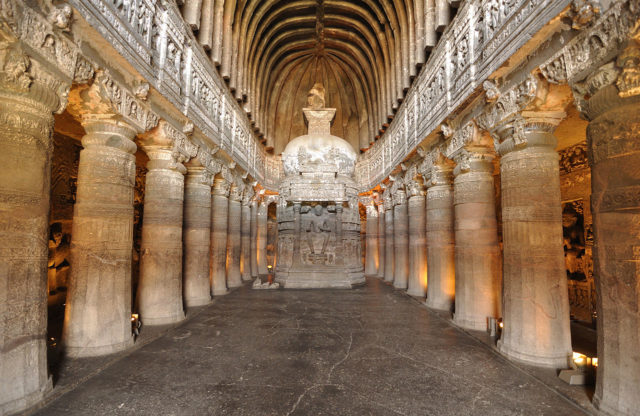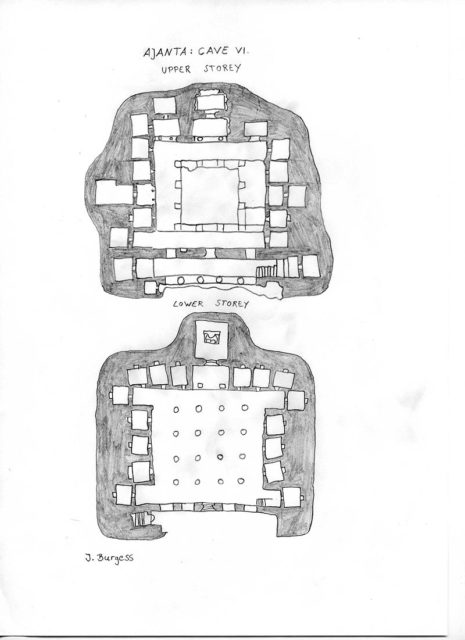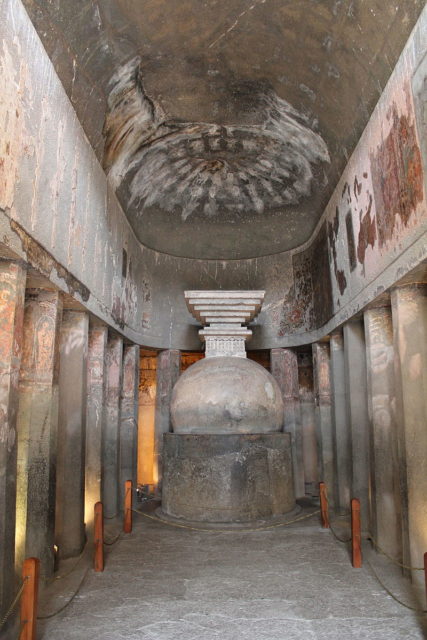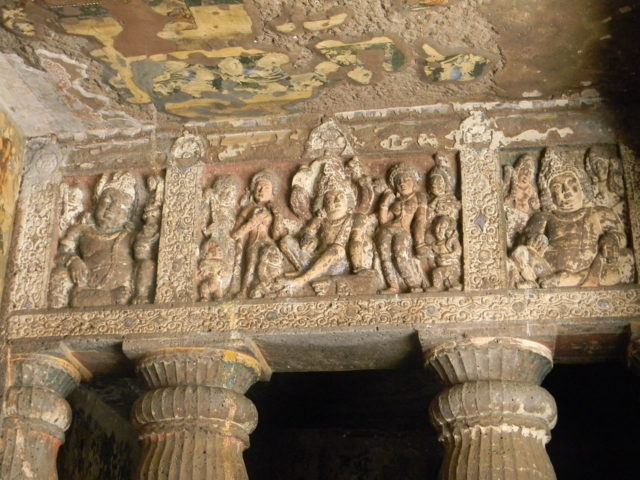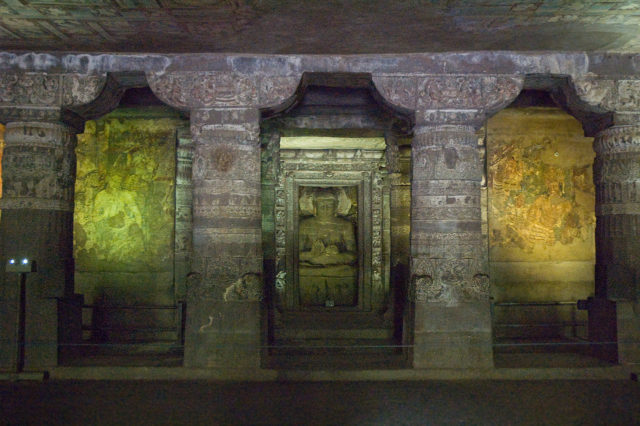The Ajanta caves in Maharashtra, India: magnificent Buddhist cave monuments

https://www.thevintagenews.com/2016/11/05/
| SHARE:FacebookTwitter |
Among the manmade cave monuments around the world, the Ajanta caves in the Aurangabad district of Maharashtra state of India are certainly one of the most beautifully crafted.
This ancient cave complex consists of 30 cave temples built between the second century BC and 650 AD. They are one of the finest examples of ancient Buddhist sacred art and served as an inspiration to all future Indian artists.

Although the caves were well known to the local population and mentioned in memoirs of many Buddhist travelers, the western world only heard about them in the 19th century when they were “accidentally” discovered by a British officer.
It was 28 April 1819, when John Smith, an officer of the 28th Cavalry, was hunting a tiger in the jungle when he stumbled upon a cave entrance. This cave would later be known as Cave No. 10.
The entrance was hard to reach and overgrown with plants; Smith asked the villagers of a nearby village to help him clear the path.
When he finally got inside, the first thing he did was vandalizing a painting of a bodhisattva by writing his name and the date of the “discovery” on it.

The cave was covered by a huge pile of rubble, so Smith’s carving stands high above the sight of a person today.
Structurally speaking, the caves are built by carving into the flood basalt rock of a cliff face that is part of the Deccan Traps (located on the Deccan Plateau of west-central India, its one of the largest volcanic features on Earth).
The horseshoe-shaped cliffside along the river Waghora, where the caves are located, is made of horizontally layered rocks that vary in quality.


Because of the different strength of the rock material across the layers, artists were forced to constantly change their plans and carving methods throughout the whole building process.
The parts that were weaker have cracked and collapsed over the years.
Construction of the caves involved cutting a small tunnel near the roof level and then spreading downwards and outwards from that point. They were built from top to bottom.

The Ajanta Caves objects are ancient monasteries and worship halls erected in the styles of two different Buddhist traditions.
Most of them are so-called vihara halls: a form of Buddhist monasteries with symmetrical square plans. The original meaning of the word is “a secluded place in which to walk.” Vihara halls were used by monks as sacred dwellings.
The second type of architecture that dominates the caves are the rectangular shrines called chaitya-griha (“the house of stupa”).
These are a form of Buddhist places of prayer, or worshiping halls, with a stupa placed at one end.

Stupas are hemispherical structures reminding of mounds, which contain sacred relics and serve as places for meditation.
All of the caves are decorated with paintings that represent the rebirths of the Buddha, depiction of famous tales about the life of Buddha, and sculptures of some Buddhist deities.


